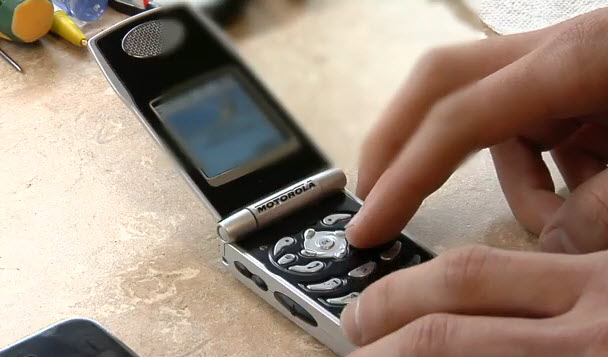|
Cell Phone Radiation: Would
Labels Help?

Cell Tower
Life Bluetube Headsets
Cell Phone Towers Health Effects
EM Field Meter
Cell Phone Sensitivity
(CNN) -- Following the World Health Organization's
announcement that radio frequency emissions from cell phones
may increase the risk of some kinds of brain cancer, what do
you need to know about the radiation coming from your phone?
How can you protect yourself? And should RF emission
information be listed on cell phone packaging, and in
stores?
First things first: The WHO study did not say "cell phones
cause brain cancer."
Rather, there is some evidence indicating a possible
connection -- and while not conclusive, it warrants further
study.
Consequently, WHO has now categorized radio frequency
electromagnetic fields as a "group 2B" possible human
carcinogen. Here's how Ed Yong, head of health information
at Cancer Research UK, explained it in his detailed analysis
of the WHO announcement:
"Group 2B means that there is some evidence for a risk but
it's not that convincing. This group ends up being a bit of
a catch-all category, and includes everything from carpentry
to chloroform."
So it's worth being aware of this classification -- just as
you should be mindful of your intake of coffee, another
group 2B carcinogen. But this announcement is not a reason
to panic.
Would labels help?
San Francisco has been wrestling with whether to require
cell phones to be labeled for their RF emissions.
Last year, the city tried to mandate cell phone radiation
labeling in stores, originally to take effect February 2011.
But according to the San Francisco Chronicle,
"implementation was delayed until May 1, then June 15. There
now is no proposed start date."
The city backtracked on this partly out of concern over a
lawsuit filed by the Cellular Telecommunications and
Internet Association -- but also because officials didn't
know how to ensure the accuracy of the labels.
Scientists aren't sure what's the most realistic, intuitive
way to communicate cell phone RF emissions to consumers.
Specific absorption rate, a measure of the rate of RF energy
that your body absorbs from the phone, is the most commonly
cited benchmark. For a phone to be certified by the FCC and
sold in the U.S., for example, its maximum SAR level must be
less than 1.6 watts per kilogram.
But Joel Moskowitz, director of the Center for Family and
Community Health at University of California, Berkeley, told
the Chronicle that "specific absorption rate isn't a very
useful measure because it's the peak reading on a variety of
tests conducted on cell phones to measure their radiation,
but doesn't indicate the average amount of radiation a user
would generally be exposed to."
He likened it to a car's gas mileage being reported only
based on driving it up a steep hill. Such a measurement
could actually make a car shopper avoid a hybrid because it
doesn't perform well on hills, even though it would
generally consume less gas.
CNET recently updated its guide to cell phone radiation
levels, which ranks phones according to SAR.
What cell phone users can do
If you are concerned that cell phones might increase your
cancer risk, probably the best way to put the WHO
announcement to good use is to minimize how much you hold
your cell phone next to your head.
Your best bet is to use a headset that physically plugs in
to your phone, such as earbuds with a microphone attached.
Unlike Bluetooth headsets, this entails no additional RF
exposure near your head -- although it may take a moment to
connect your headset to your phone.
While the WHO examined only the possible risk of brain
cancer, you can further reduce your cell phone RF exposure
by placing your phone a few inches away from your body while
using it -- such as in a purse or on the table.
Or whenever possible, talk via your phone's speaker
function, or send a text message instead of placing a call.
The opinions expressed in this commentary are solely those
of Amy Gahran.
Albury Australia
Ireland Dublin
Sri Lanka Colombo
Thailand Bangkok
Azerbaijan Baku
Guinea-Bissau Bissau
Atlanta Georgia USA
Tunisia Tunis
El Salvador San Salvador
Kuwait Kuwait City
http://www.emfnews.org/store |
"Revolutionary New Technologiess
Protect You from the Harmful Effects of
Cell Phone Radiation,
Computers, Bluetooth Headsets, Microwave Ovens,
Cordless Phones, and other Wireless Technologies."
|








